A great way to add lovely greenery and blossoms to your yard is to train climbing vines and plants on a trellis. A simple trellis can be transformed into a living artwork by climbing plants, which weave vines up the framework in a variety of wavy designs.
Not only are climbing plants on trellises visually appealing, but they can also provide additional privacy, shade, and even fragrance to an outdoor space.
With so many wonderful climbing plant varieties to choose from, selecting the best ones for your trellis can be an enjoyable but difficult task.
To help narrow down the options, here are some of the top climbing plants to consider growing on a trellis in your garden.
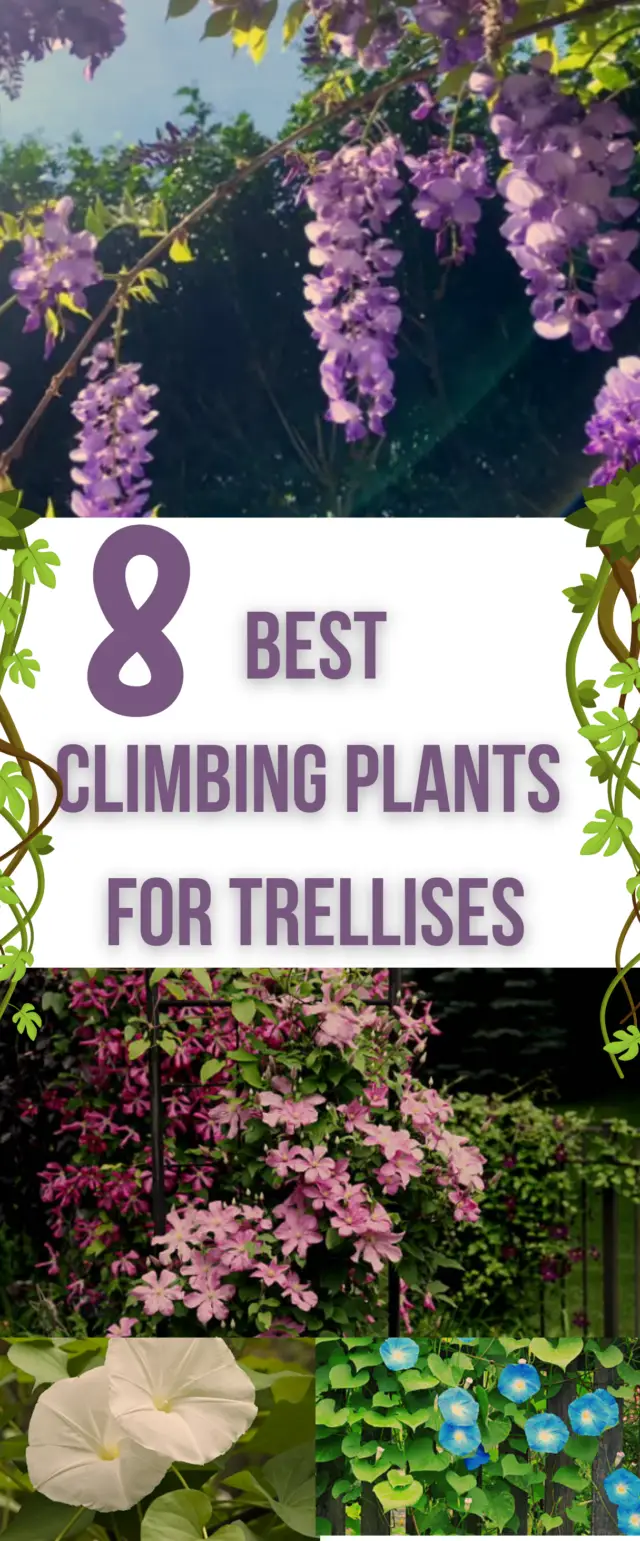
Best Climbing Plants for Trellises
Clematis
Clematis is likely the queen of climbing plants for trellises. It produces masses of beautiful blooms in colors like purple, white, red, pink, and bi-colors. Some clematis varieties are even delightfully fragrant. The vines can reach up to 20 feet in length, making them perfect for even the largest of trellises.
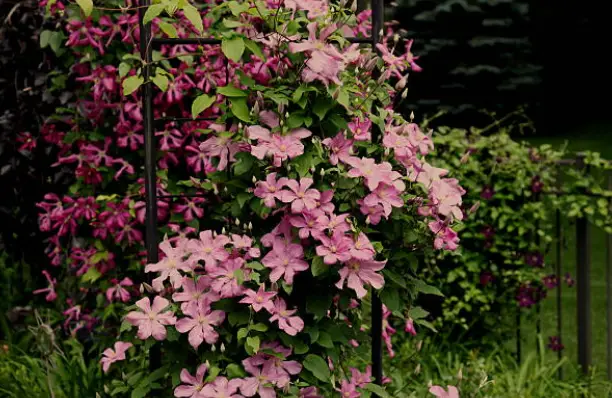
There are three main types of clematis: Early bloomers that flower in spring on old wood, repeat bloomers that flower in late spring and again in summer/fall, and late bloomers that flower in summer on new growth.
For the best results, be sure to select clematis varieties suited to your growing zone. Plant them where they’ll receive at least 6 hours of direct sunlight and grow them in moist, well-draining soil amended with compost or manure. Prune established clematis annually to encourage new growth and more flowers.
Climbing Roses
Rambling roses grown on a trellis create a breathtakingly romantic and fragrant display in the garden. Climbing roses bloom repeatedly throughout the growing season, with abundant flushes of flowers in spring and fall. In the heat of summer, most types rest with just scattered blooms.
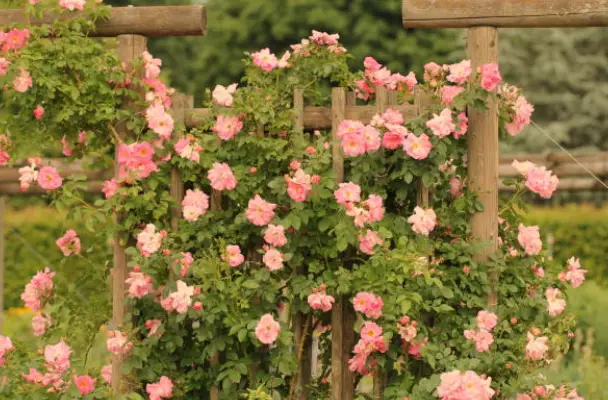
Best Climbing Plants for Trellises
Some excellent climbing rose varieties for trellises include:
- Don Juan deep velvety red
- Golden Showers, Bright Yellow
- Fourth of July: red and white stripes
- Blaze, fire red
- Zephirine Drouhin, Rose Pink
For the most prolific blooms, plant climbing roses where they’ll receive full sun (at least 6–8 hours per day). They prefer well-draining soil amended with compost or manure. Tie the canes to the trellis as they grow, and prune climbers annually to remove dead and damaged wood.
Wisteria
The hanging clusters of lilac or white flowers on a mature wisteria vine create an unforgettable floral display when grown on a trellis or pergola. Wisteria sends down pendulous racemes of blossoms that can reach up to 30 inches in length, covering the entire trellis in cascades of purple or white in mid- to late spring.
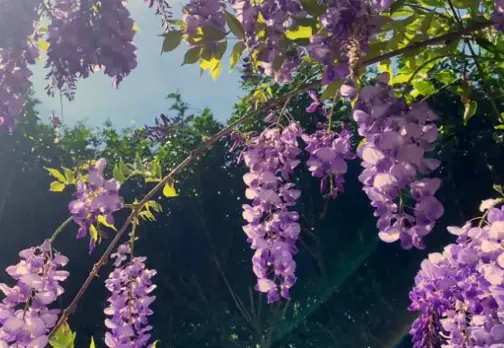
Climbing Plants for Trellises
While these vines can become invasive if not properly contained, there are several ways to keep wisteria maintained on a trellis:
Plant wisteria in a large container or raised bed rather than the ground
Root prune the vines annually to restrict spread
Choose the “Black Dragon” variety that is sterile and won’t self-seed
Select the “summer-flowering” types that bloom later and don’t get as rambunctious
Wisteria prefers full sun, well-draining soil, and plenty of room to spread. Prune annually after flowering to maintain shape and prevent overgrowth.
Passionflower
For truly unique floral displays, plant a passionflower vine on your trellis. These fast-growing vines produce exotic-looking blooms with intricate fringe patterns inside the flowers. Each bloom lasts just a day or two, but the vines keep producing new flowers for many weeks.
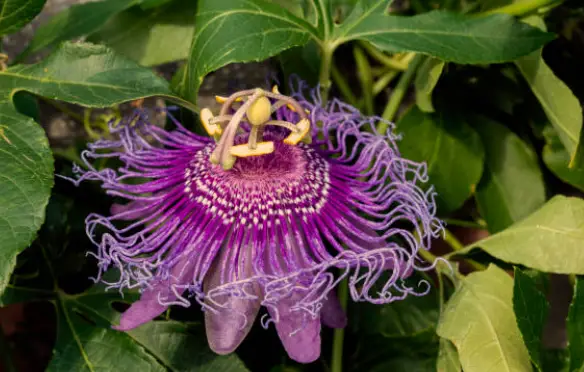
Passiflora varieties come in shades of purple, white, pink, red, blue, and more. Some types are even fragrant. Hardier varieties like Passiflora incarnata can come back each year in zones 6–9. For cooler climates, grow annual passiflora like Passiflora caerulea or Passiflora edulis (fruiting passionfruit) and treat them as annuals.
Plant passionflowers in full sun in well-draining, fertile soil. Keep the soil consistently moist, and provide a sturdy trellis for the vigorous vines to climb. Passionflower foliage can provide good privacy when grown on a trellis.
Honeysuckles
The sweetly-scented tubular flowers of honeysuckle vines make them a delightful choice for growing on a trellis near a seating area or entryway where their perfume can be enjoyed. Most honeysuckle varieties bloom repeatedly throughout the growing season, providing months of fragrance and beauty.
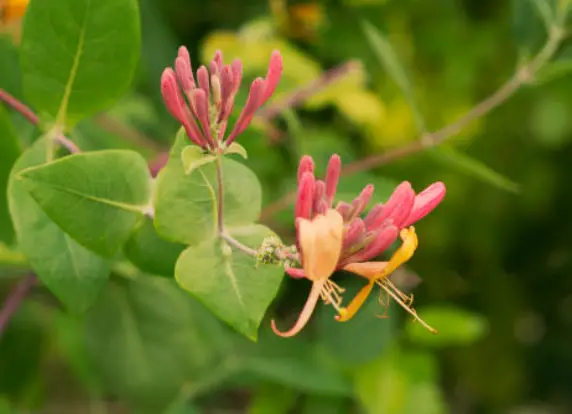
Some lovely honeysuckle options include:
- Dropmore Scarlet: tubular red flowers edged in yellow
- Scentsation: Very fragrant yellow and cream blooms
- Blanche Sandman: red, yellow, and white flowers
- Mandarin: orange trumpet-shaped flowers
Plant honeysuckle vines in well-draining soil in full sun to partial shade. Keep the soil consistently moist as they establish their root systems. The vines require little pruning, except to thin out dead or wayward growth. Tie the flexible stems to your trellis as needed.
Morning Glories
For cottage garden charm on a trellis, you can’t go wrong with morning glories like the old-fashioned ‘Grandpa Ott’ or Heavenly Blue varieties. These annual vines produce masses of funnel-shaped blooms, with the flowers typically lasting just a day before withering. But never fear; more blooms will quickly follow!
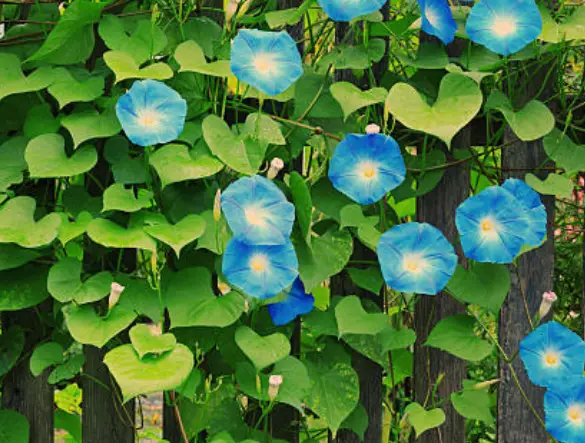
Morning glories are incredibly easy to grow from seeds directly sown outdoors after the last spring frost. Choose a site in full sun with well-draining soil. The vines climb by twining their stems, so your trellis must have narrow openings for the tendrils to grab onto.
While morning glories self-sow freely when grown in the ground, planting them in containers or raised beds can help prevent them from spreading uncontrollably. Let the vines completely cover and fill out your trellis for maximum flowering all summer.
Sweet Peas
For deliciously scented blossoms on a trellis, sweet peas are a spectacular choice. These old-fashioned annual vines produce clouds of dainty flowers in a rainbow of colors, from pure white to deep purple and pink to red. The blossoms emit an intoxicating honey-like fragrance that is simply divine.
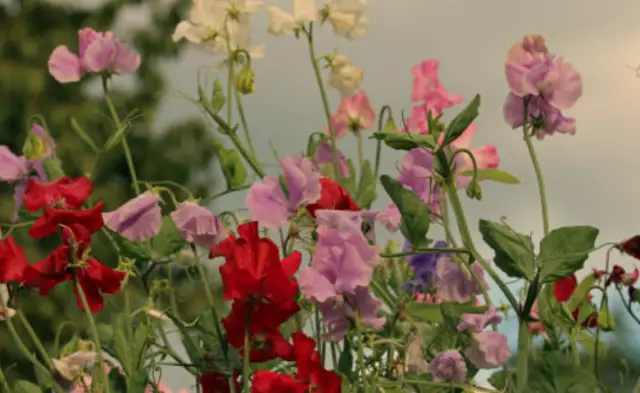
Sweet peas thrive in cool weather, making them ideal for planting in early spring to bloom through late spring and early summer. Provide them with fertile, well-draining soil and at least 6 hours of direct sun per day. The vines require cool soil to develop their root systems before blooming, so add a layer of mulch to keep the soil cool as temperatures rise.
Be sure to pick sweet pea blossoms regularly to encourage more flowers. Allow some pods to develop near the end of the season to collect seeds to replant next year. Sweet peas look lovely grown on small, decorative trellises or obelisks.
Moonflowers
Moonflowers (also called moonvine or tropical white morning glories) are vigorous climbing vines that produce huge, flat-faced white blooms up to 6 inches across! The flowers unfurl in the evening, releasing an intoxicating fragrance into the night air. During the day, the flowers close up, creating big green pods.
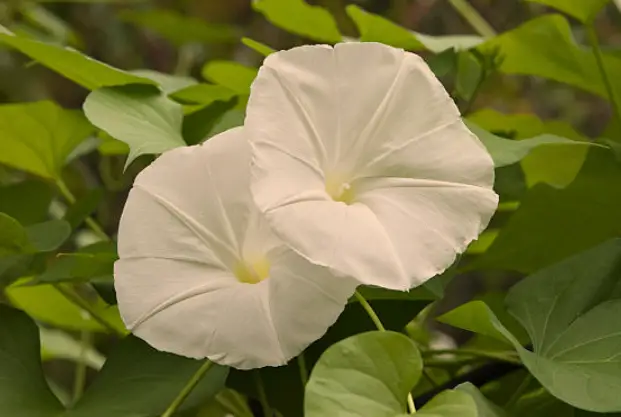
These annual vines can grow to 15 feet or more in a single season, making them excellent choices for covering a large trellis or arbor. Provide them with full sun, fertile soil, consistent moisture, and a sturdy trellis with narrow openings for stems to grab onto.
Plant moonflowers from seeds started indoors or directly sow seeds outdoors after the last spring frost. Take care not to disturb the roots when transplanting seedlings. The vines take a while to establish, but growth explodes in mid-to-late summer, with the first flowers arriving in early fall.
Those are some of the very best climbing plants to grow on a trellis! Whether you choose flowering vines like clematis or wisteria, rambling roses, or annual beauties like morning glories or moonflowers, any of these climbers are sure to add wonderful beauty and interest to your trellis and garden.




